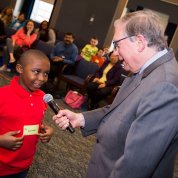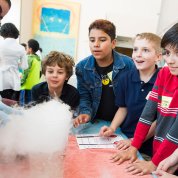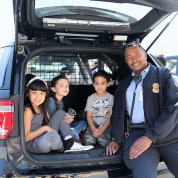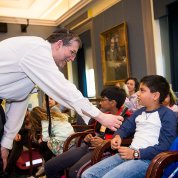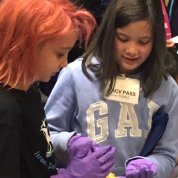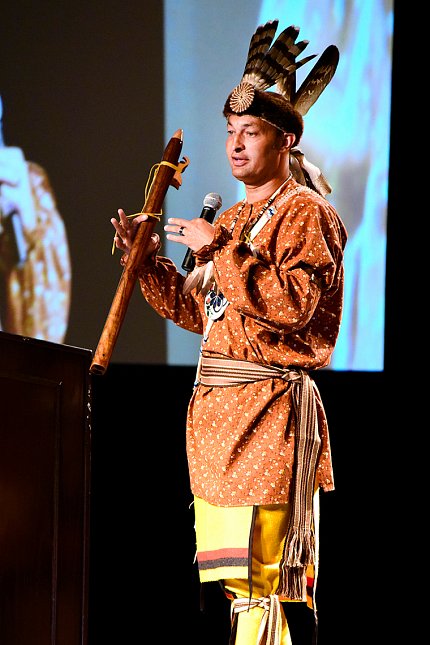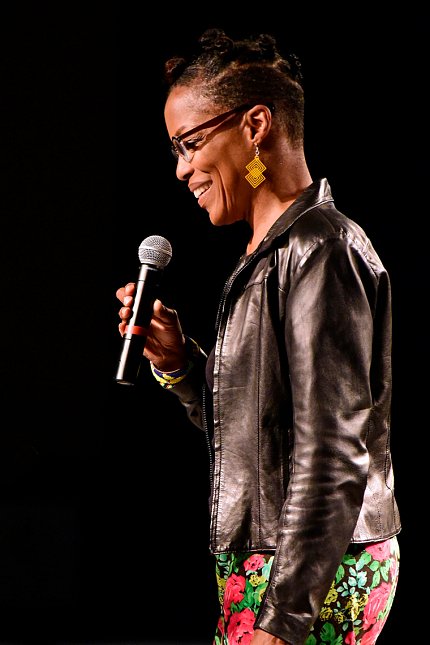Earth Day, Too
NIH Observes Take Your Child to Work Day
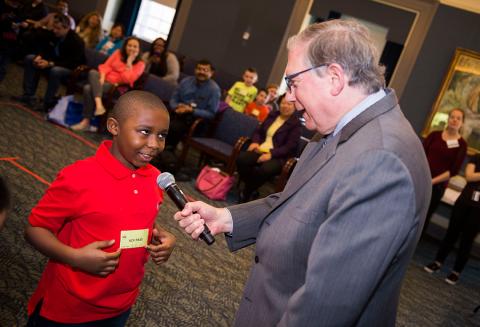
Photo: Lisa Helfert
Where can you tour a pathology lab, learn how to draw blood, visit live birds and reptiles and observe smoking’s effects on the respiratory system? Oh, and drag adults toward the candy shop and knock on office doors then run, too?
Only at NIH’s 24th Take Your Child to Work Day/Earth Day, of course!
This year, more than 4,100 students participated in over 190 activities on Apr. 26. They learned about vital services their parents and guardians provide at NIH, explored career opportunities in medical research and had fun while doing it.
Around 9:30 a.m., a small group of students, their parents and guardians gathered outside the NCI Autopsy Suite in the Clinical Center. Future engineers, nurses, surgeons and lawyers donned their medical scrubs, were warned not to touch anything unless they wore gloves and told, “If you don’t feel well, let me know.” The students listened intently as they learned there’s more to pathology than what’s portrayed on forensics crime drama television shows.
In another part of the CC, technologists from the departments of laboratory medicine and transfusion medicine gave interactive presentations about chemistry, hematology, immunology, microbiology and phlebotomy during the annual Fantastic Voyage event. Other than technologists, no adults were allowed in the room—“Sorry, parents!”—until it was time for photos.
NIAID’s Christina McCormick brought her son, Kevin, for the 4th time. This year, Kevin, who wants to be a scientist when he grows up, enjoyed the police department’s K-9 demonstration and extracting DNA from a strawberry.
Elsewhere on campus, students, their parents and accompanists took part in Earth Day activities inside Bldg. 45 and under tents on Bldg. 1’s lawn. This year’s theme was “End Plastic Pollution.” Indoors, park rangers from the Scales and Tales program brought birds and reptiles, including hawks and snakes.
Outside on the lawn, kids and their chaperones could grab a bite to eat from one of many food trucks and learn about electric vehicles, the area’s local waterways and wildfire prevention.
Activities continued into the afternoon. On the CC’s 7th floor breezeway, Dr. Amisha Barochia and physician assistant Kerry Ryan, both from NHLBI’s Pulmonary Branch, staffed a booth with information about the anatomy and the function of lungs. The booth featured two sets of preserved pig lungs: one set healthy and another showing the damage that could occur from smoking.
Students could touch the lungs and inflate them with a foot pump. At first, Barochia said, most children are put off by the smell and reluctant to touch the lung. She hopes the demonstration will deter students from smoking.
NCI’s Larry Pierce’s son, Cole, touched the lung. Of the experience, he explained, “It’s cool, but I’d rather stick with the rubber” lungs.
All in all, it was another successful TYCTWD/Earth Day, informing and entertaining both adults and students.

